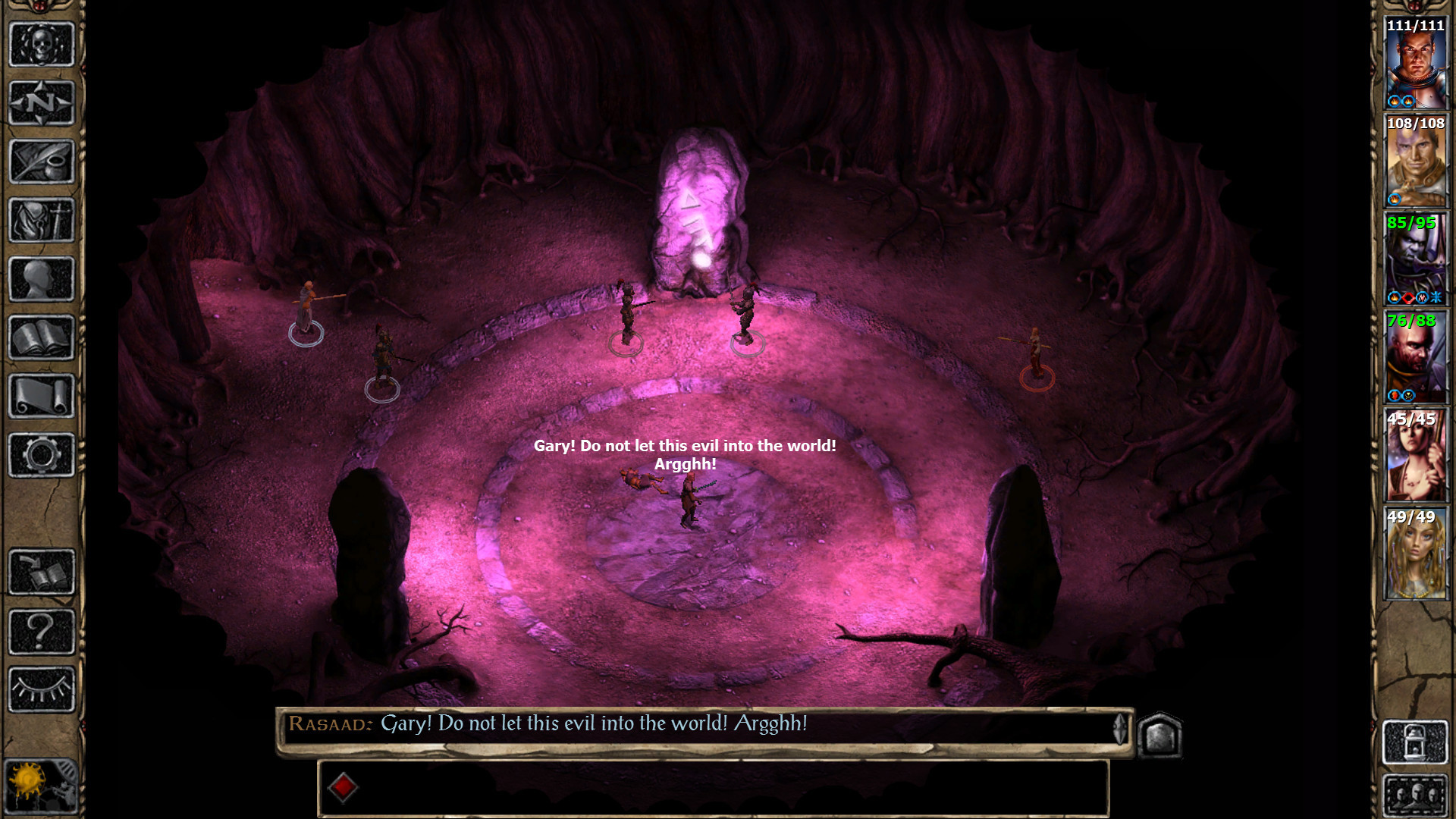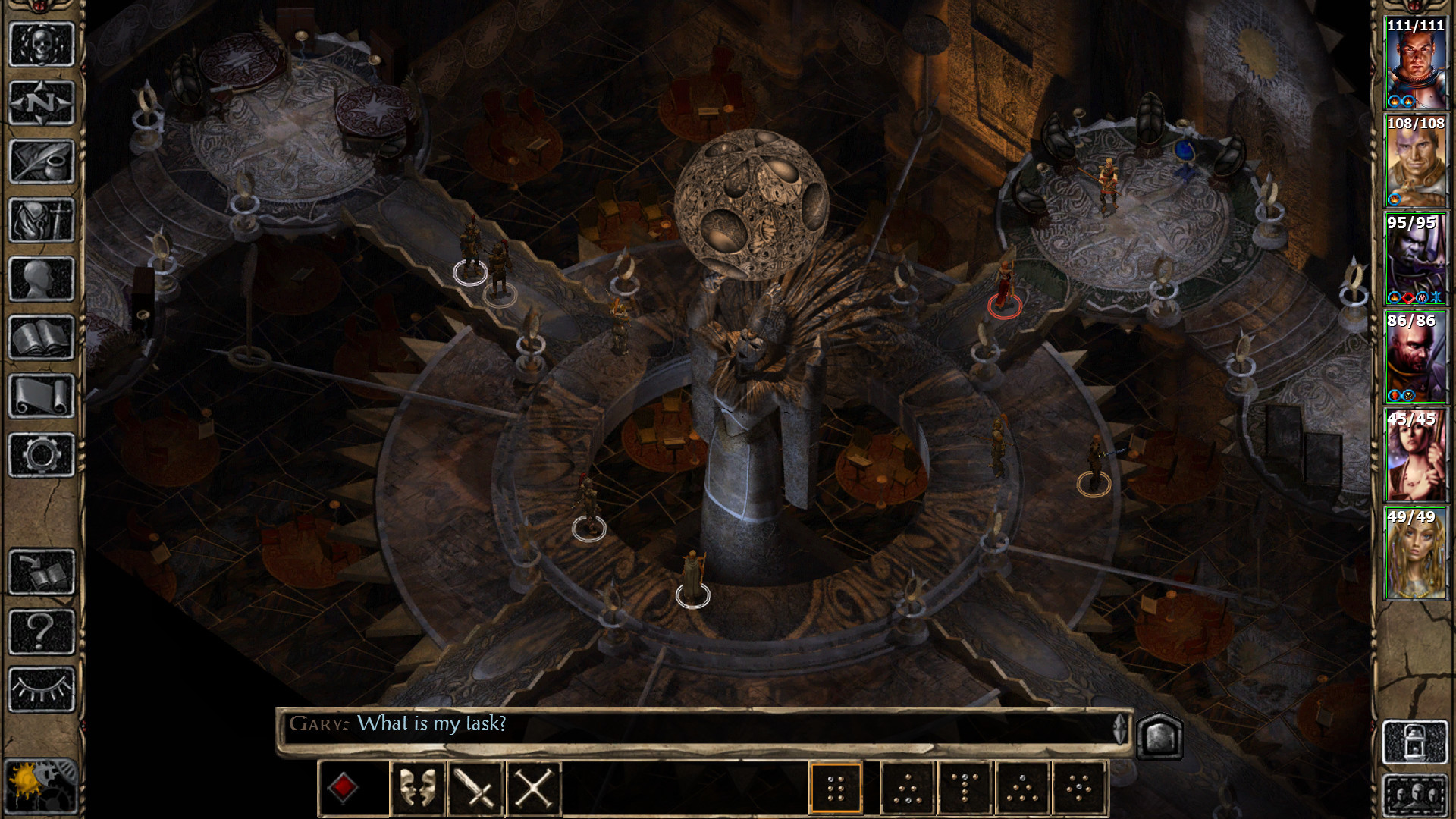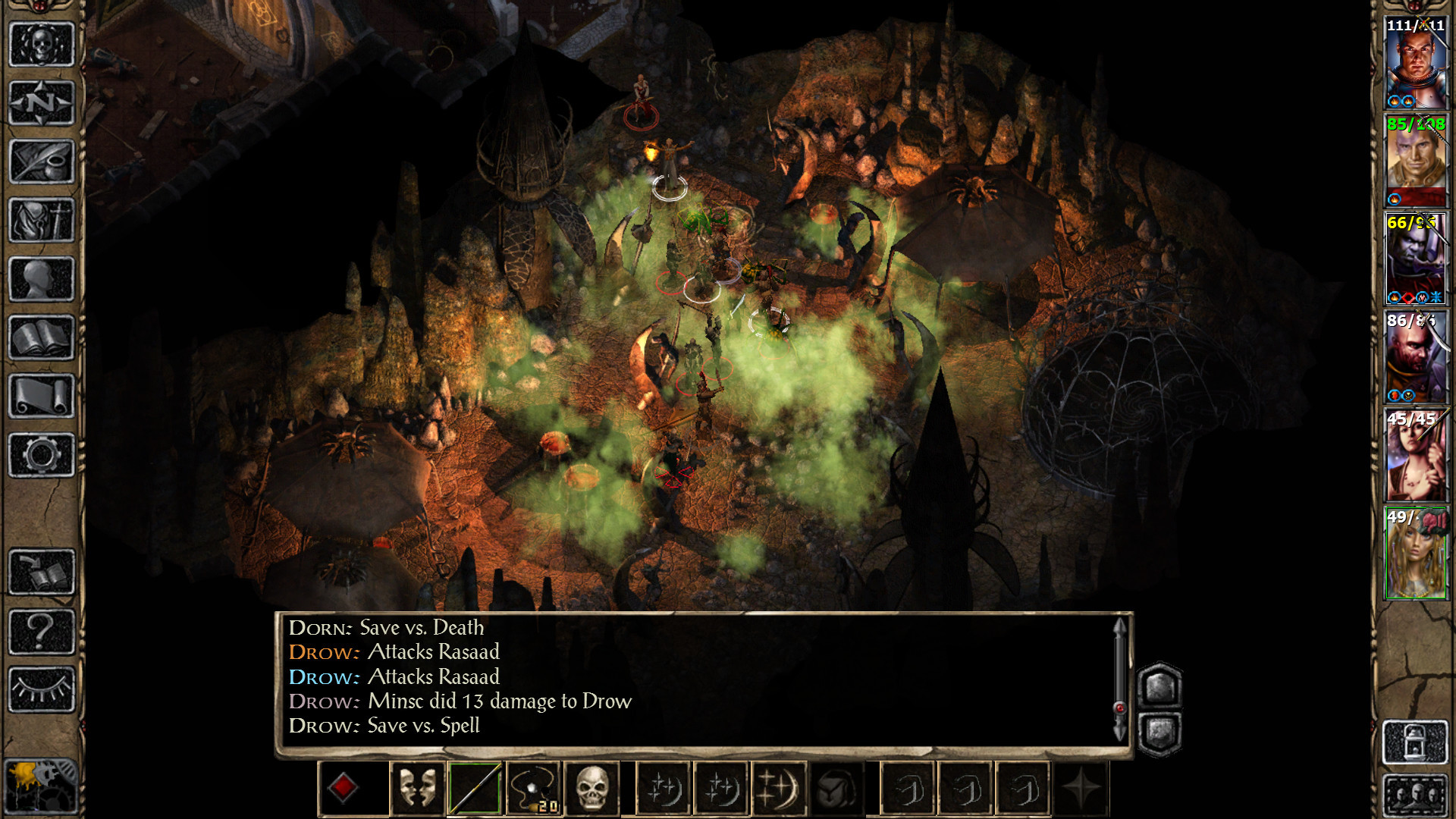Digging into the past of video games is a tricky thing. There are pitfalls that you can drop into without warning: nostalgia, memories of frustration, and “does it hold up” lurk around every corner. It is with that dark, dank, dungeon-y danger that I am writing this in celebration of the 20th anniversary of the release of Baldur’s Gate II: Shadows of Amn, a role-playing game based on the Dungeons & Dragons license that came out this week two decades ago. Without overstating things, I think it’s one of the greatest games ever made, and all we have to do is look at the waves it made in the industry to understand that we’re still living in its wake.
Baldur’s Gate II continues the story of the “Bhaalspawn,” the player character from the first Baldur’s Gate. In that game, your created character traced a conspiracy up and down the Sword Coast, revealing an iron trading monopoly scheme that had the resurrection of the currently-dead God of Murder as its final completion. Along the way, you learn that you are one of the children of that dead god, and that the plan to resurrect said god is a Highlander-esque scheme in which all of its children would need to kill each other one by one until the final child had gathered all of the...dead god juice? It’s magic. Don’t think about it too hard. The game ended when you saved the Sword Coast from trade warfare and killed your murderous brother Sarevok.
That first game lingers in our cultural gaming imagination for a few reasons. It was an official Dungeons & Dragons game that contained many of the classes, species, creatures, and spells of that long-existing fantasy game. It was a big, open experience that allowed the player to approach many of its challenges in freeform ways and (often) in an order of their choice. Pause-and-play combat that allowed for both deep strategy or hack and slack maneuvering allowed players to figure out the intricacies of arcane D&D combat at their own pace. And, importantly, it all took place on beautiful painted maps from an isometric perspective.

Everything you just read carries over to Baldur’s Gate II, and one of the reasons that the sequel has stuck in our collective cultural imagination, I would argue, is that it doubled down on these strengths and expanded them in scale. In essence, Baldur’s Gate walked so the sequel could run, which is exactly what co-Design Lead James Ohlen claimed a few years after release: “I think the stars aligned for Baldur's Gate II in a way that they probably won't again,” he explained in an interview with GameBanshee. “We had a finished engine that allowed us to focus on content rather than basic functionality. We had enough staff familiar with the engine that we could iterate content very quickly. We shipped it at a good time, shortly before the Christmas shopping season. Our system requirements were low, and a lot of basic machines could run it when they couldn't run the latest 3D marvel. It was a good environment for getting content into a game, as the result has shown.”
It’s weird to think of a video game classic as purely the beneficiary of good circumstances, but coming to grips with history is often simply understanding how contingency produces things. Baldur’s Gate II is a large game by any stretch of the imagination, containing about 290 quests, more than a million words of script, and something like 350 unique areas to visit. That scale was made possible by having to spend less time on engine development and concepting how a person might make a D&D game, both of which consumed huge parts of the first game’s development time. As Ohlen points out, though, we can’t dismiss the fact that BGII was also in the right place at the right time: it didn’t require a cutting edge PC to run, and it launched in the right window of time.
What Ohlen doesn’t discuss, but what is a little more clear in hindsight, is that the game also emerged into ideal conditions as far as its content was concerned. RPGs were in an odd place. Diablo_’s influence continued to loom large over the PC space, and _Baldur’s Gate II stuck out as overly complicated and massive compared to the more limited and honed Nox or the infinitely more tactical Jagged Alliance 2. Across different platforms, Japanese RPGs dominated, and the Final Fantasy series continued to drive sales of the PlayStation as PC games tried to find their identity in the convoluted 3D era.

Revisiting Baldur’s Gate II, as I did over the course of a year in my show Mages & Murderdads, reveals something unique and special that elevates it beyond its release conditions. The best term I can come up for this special quality is constrained freedom, and it has to do with how Baldur’s Gate 2 is structured.
You see, in the first Baldur’s Gate, you always had something right in front of you to do. You had to find your adopted father’s friends, then you had to go to Nashkel, and on and on. By contrast, Baldur’s Gate II opens in a tutorial dungeon of a mage who has kidnapped you. After navigating your way out of it, the mage is taken to wizard jail with your sister Imoen, and you’re given the vague task of liberating her from said jail. Then the game opens up, and it opens up so widely that you can complete nearly all of the game’s quests in chapter two of a six chapter game. It is open, and filled with things to do, in a way that other similar games like the Ultima and Fallout franchises simply are not, and it puts the onus on the player to find their own fun in the temples, dungeons, and caves of the world outside.
That’s the freedom part, and it remains an excellent approximation of the Dungeons & Dragons tabletop experience that we’ve gotten in a video game. You find people and talk to them, and those people send you to far-flung places in the region of Amn to ply your trade as an adventurer with a party of assembled characters. But it’s not like falling off a cliff of being kicked out into the world of a Bethesda game.

The other side of the term, constraint, also appears in a thousand productive and directed ways. The way you choose to build your character, especially their class, determines how you can engage with challenges in the game. Sneaking and backstabbing is a viable path in the world, as is sword-and-board melee combat or the over-powerful wizard spells. But unlike many other post-Diablo games that see these ways of interacting with the world as distinct, Baldur’s Gate II gives you access to a party and therefore a multitude of ways to use all of these. You’re not just a wizard, because you can control a whole group of people. You’re the player character, but you’re also the party. You can sneak a character behind an enemy, start combat with a wizard spell using a separate character, and then do some explosive damage with the thief who was hiding the whole time. Within some very delimited constraints, you build your party as a toolbox of approaches, and you equip them with items to further diversify those abilities. As you play the game, you also learn to use the constraints of map design, character AI, and the… eccentricities… of the combat system to your advantage. At every turn in Baldur’s Gate II, you experience some kind of constraint or frustration, and in nearly all of those instances your experience is broadly better for it.
The development of character quests is also substantially important as the legacy of Baldur’s Gate II. While the previous game had quests that certain party members wanted to achieve, these were mostly limited and the end result of failure (or ignoring them) was simply that those party members would leave after a certain timer completed. BG II formalizes these into companion quests that are triggered in the world, asking the player to converse and learn about the desires (and struggles) of the NPCs. Budding from these quests were also romance quests, now a BioWare staple, that were characterized at the time of release by producer Ben Smedstad as “an FFVII-type thing.”
When we think of the 20-year legacy of Baldur’s Gate II, I don’t think we’re left with a picture of its interesting characters, its general plot, or the motivations of its various (cool!) villains. Similarly, pause-and-play combat remains frustrating even when it is done perfectly in games like the Pillars of Eternity series. Instead, I think we have a broad structure, a mode of approach to thinking about how players and their characters interact with the world, defined by constrained freedom. And what makes it special is how that happens at a scale that was simply unlike anything else before it.
The echoes of this constrained freedom are things we see in games daily. Our open worlds are like Baldur’s Gate II_’s world, not like _Fallout 2_’s vast, empty wasteland. Our progression in games is tied to our special lootable equipment found in unique places, not predominantly purchased from in-game shops. Our romances are defined by specific parameters and happen in plotted segments, leaving us free in the meantime to pursue other goals. Our item text, our dialogue options, our mission structures. It’s hard to think of something in RPGs today that did not pass through and become warped by _Baldur’s Gate II, and it makes sense to some degree; you can see how the Baldur’s Gate games and Final Fantasy dominate a huge share of the RPG imagination in the early 2000s.
While we’ve gone a long time without an additional Baldur’s Gate game (soon to be rectified), the legacy has obviously been kept alive. While Planescape: Torment has had a long and powerful presence in the game space, and obviously had a huge influence on the recent success of Disco Elysium, but pound-for-pound it’s hard to even account for everything that Baldur’s Gate II has impacted. It’s in the DNA of games now, and where there are not explicit references, there are implicit borrowings. It remains a titan of a game twenty years later.
from VICE US https://ift.tt/2Elibyv
via cheap web hosting
No comments:
Post a Comment